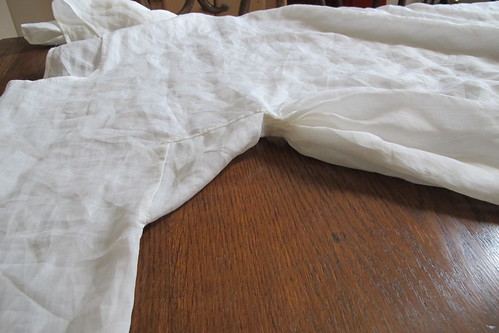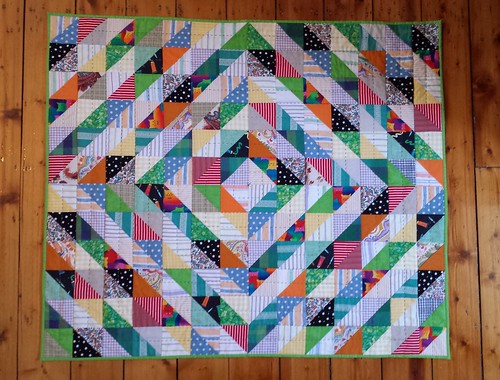I write many of my posts, food posts particularly, mostly as a sort of online journal for my own use. As in: “I know I’ve made raspberry jam before, how did I do it?”. It’s lovely bonus that other people seem to get some enjoyment from reading.
I picked another couple of kilos of slightly riper fruit this morning. I’ve made jam and 600g fruit is set aside (with a banana, covered in paper to ripen further) for tomorrow’s possible curd making experiment.
This is a basic jam, but it took ages due to the small size of the fruit and the stone removal step.
2.7kg whole fruit (minus 400g stones=2.3kg)
~100ml water
2kg sugar
Rinse and drain fruit. Remove stalks and any nasty looking bits. Cut a slit each plum to help the stones emerge. Weigh. Put in a large pot (I used my 7L stock pot) with a little water over a low heat. Stir fairly often, first until the fruit liquidises, then to keep it from sticking and burning on the bottom of the pot. Continue stewing until the stones start emerging. I tend to encourage this by squishing the reluctant fruit against the side of the pan. It would likely be less work if I were more patient. Lift the stones out with a spoon into a sieve set over a dish. I then rub what plum juice and pulp I can back into the pan, you could not bother if you’d rather. Weigh what you’ve removed so you can judge how much sugar to add. For this, a 2kg bag of sugar was ~0.85:1 ratio, which is about how I like to do jam. Convenient eh?
I then turn off the heat, stir the sugar in gently and leave to sit for up to an hour. This is both to let the sugar dissolve and for me to have a rest. Then bring the pot up to a rolling boil for about 10min or until a set is achieved on testing. Bottle in sterilised jars.
I’m thinking these aren’t wonderful quality damsons. They have many of the characteristics but I haven’t yet managed to ripen them to the lovely dark colour one sees in pictures. I expected more flavour too I suppose. I’d love to know what variety they are, but the tree is from the Flemings range and they don’t give any more information than “Damson”. I’ve left some fruit on the tree to see how it develops over the next week. On the other hand, I’ve never met fruit I know to be damsons other than mine, only seen pictures and heard descriptions.


























